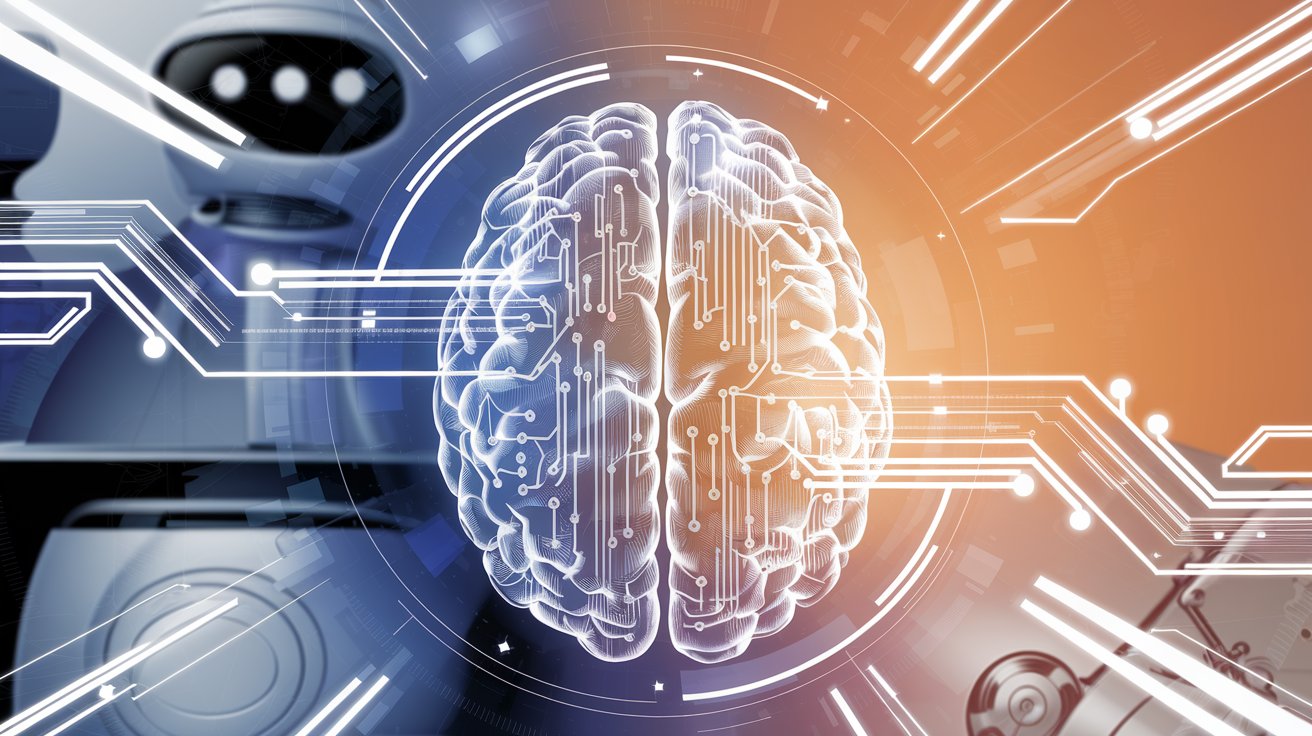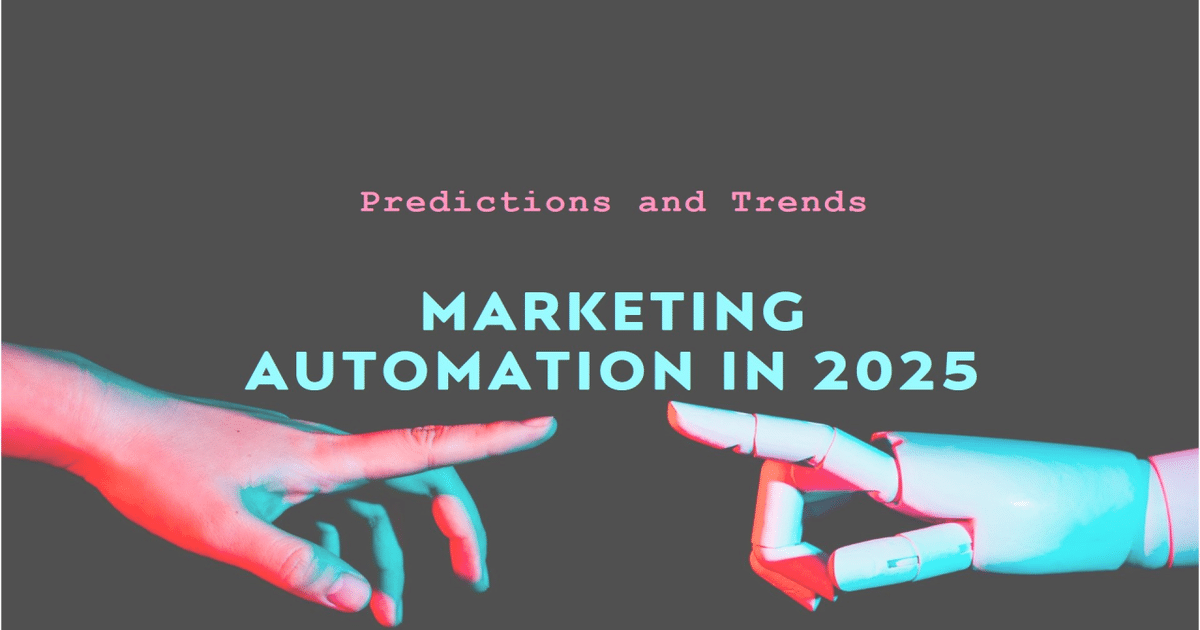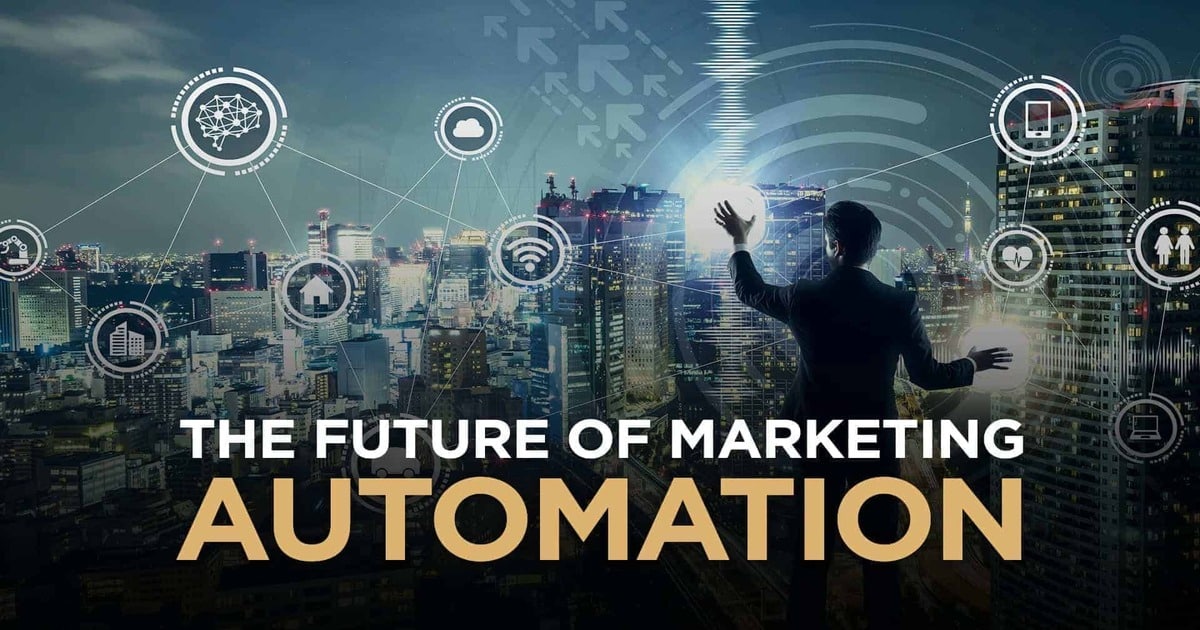Artificial Intelligence (AI) has become a buzzword in recent years, but many people still find it challenging to grasp its concept fully. In this article, we’ll break down the complex world of AI into simple, easy-to-understand terms. We’ll explore its definition, history, types, and applications, helping you gain a comprehensive understanding of this fascinating technology.
By the end of this article, you’ll have a clear picture of what AI is, how it works, and how it impacts our daily lives. We’ll also discuss the challenges and future prospects of AI, equipping you with valuable insights into this rapidly evolving field.
Definition of Artificial Intelligence
Basic Concept of AI
Artificial Intelligence refers to the development of computer systems capable of performing tasks that typically require human intelligence. These tasks include visual perception, speech recognition, decision-making, and language translation. In essence, AI aims to create machines that can think and act like humans.
To put it simply, AI is like teaching a computer to solve problems and make decisions on its own, much like a human would. Imagine having a super-smart digital assistant that can understand your needs, learn from its experiences, and adapt to new situations – that’s the essence of AI.
The Difference Between AI and Natural Intelligence
While AI shares similarities with human intelligence, there are fundamental differences:
- Learning process: Humans learn through experiences and interactions, while AI learns through data and algorithms.
- Adaptability: Human intelligence is highly adaptable to new situations, whereas AI’s adaptability is limited to its programming and data input.
- Creativity: Humans can think creatively and “outside the box,” while AI’s creativity is constrained by its algorithms and training data.
- Emotional intelligence: Humans possess emotional intelligence, which AI currently lacks.
Understanding these differences helps us appreciate both the potential and limitations of AI technology.
History of Artificial Intelligence Development
Important Milestones in AI History
The journey of AI has been marked by several significant milestones:
- 1950: Alan Turing proposes the Turing Test, a method for determining if a machine can exhibit intelligent behavior.
- 1956: The term “Artificial Intelligence” is coined at the Dartmouth Conference.
- 1997: IBM’s Deep Blue defeats world chess champion Garry Kasparov.
- 2011: IBM’s Watson wins the quiz show Jeopardy!
- 2016: Google’s AlphaGo defeats world champion Go player Lee Sedol.
- 2022: ChatGPT is released, showcasing advanced natural language processing capabilities.
These milestones demonstrate the rapid progress of AI technology over the years.
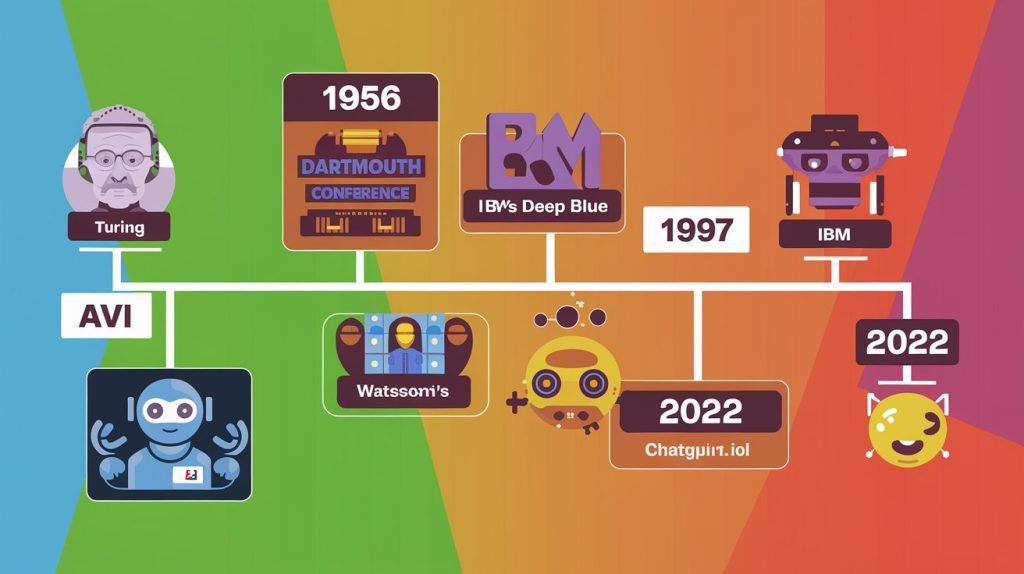
History of artificial intelligence development
Pioneering Scientists in the Field of AI
Several visionaries have contributed significantly to the development of AI:
- Alan Turing: Considered the father of theoretical computer science and artificial intelligence.
- John McCarthy: Coined the term “Artificial Intelligence” and developed the LISP programming language.
- Marvin Minsky: Co-founded the Massachusetts Institute of Technology’s AI laboratory.
- Geoffrey Hinton: Known for his work on artificial neural networks and deep learning.
- Yann LeCun: Pioneered the development of convolutional neural networks.
These scientists laid the foundation for modern AI research and applications.
Types of Artificial Intelligence
Weak AI and Strong AI
Weak AI, also known as Narrow AI, is designed to perform specific tasks within a limited domain. Examples include virtual assistants like Siri or Alexa. On the other hand, Strong AI, or Artificial General Intelligence (AGI), refers to AI systems that possess human-like general intelligence and consciousness. Currently, all existing AI systems fall under the category of Weak AI.
Machine Learning and Deep Learning
Machine Learning is a subset of AI that focuses on creating algorithms that can learn from and make predictions or decisions based on data. Deep Learning is a more advanced form of machine learning that uses artificial neural networks inspired by the human brain to process complex patterns in large amounts of data.
Supervised and Unsupervised Learning
In Supervised Learning, the AI model is trained on labeled data, where the correct outputs are known. This is like a teacher guiding a student. Unsupervised Learning, on the other hand, involves training models on unlabeled data, allowing the AI to find patterns and relationships on its own.
How Artificial Intelligence Works
Data Collection and Processing
The foundation of AI lies in data. AI systems collect vast amounts of data from various sources, such as sensors, databases, and the internet. This data is then cleaned, organized, and preprocessed to make it suitable for analysis.
Machine Learning Algorithms and Models
AI uses various algorithms and models to analyze data and make predictions or decisions. These algorithms can range from simple decision trees to complex neural networks. The choice of algorithm depends on the specific problem and the type of data available.
AI Decision-Making Process
Once trained, AI systems can make decisions or predictions based on new input data. This process involves:
- Receiving input data
- Processing the data through the trained model
- Generating an output or decision
- Refining the model based on feedback (in some cases)
This cycle allows AI systems to continuously improve their performance over time.
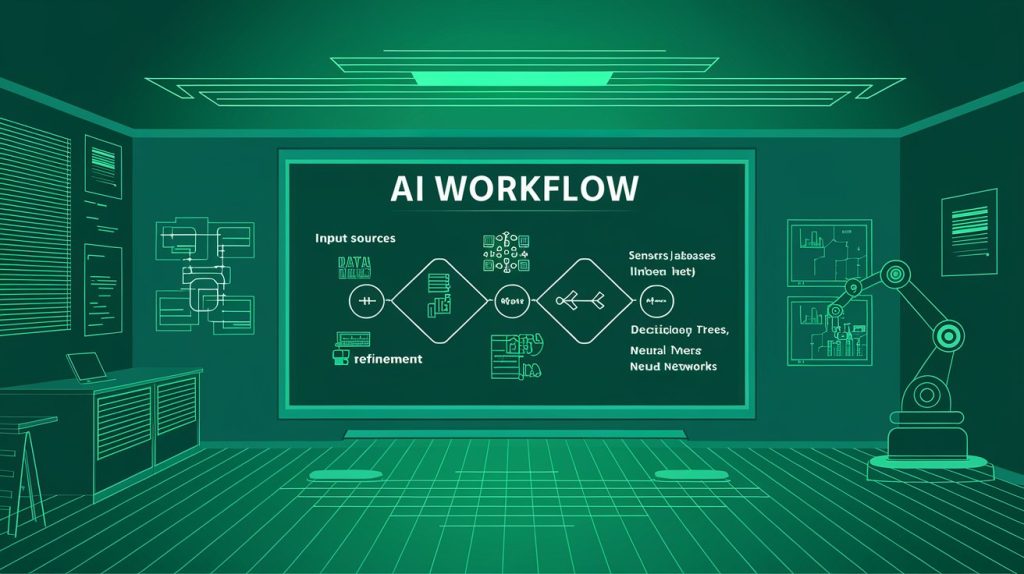
How Artificial Intelligence Works
Applications of Artificial Intelligence in Everyday Life
AI in Smartphones
AI is deeply integrated into modern smartphones, powering features such as:
- Voice assistants (e.g., Siri, Google Assistant)
- Camera enhancements and face recognition
- Predictive text and autocorrect
- Battery optimization
These AI-driven features enhance user experience and device functionality.
AI in Customer Service
Many businesses are leveraging AI to improve customer service:
- Chatbots for 24/7 customer support
- Personalized product recommendations
- Automated email responses
- Voice recognition systems for call routing
AI-powered customer service can handle routine inquiries, freeing up human agents to focus on more complex issues.
AI in Healthcare and Wellness
AI is revolutionizing healthcare through:
- Diagnostic assistance using medical imaging
- Personalized treatment plans based on genetic data
- Drug discovery and development
- Remote patient monitoring through wearable devices
These applications have the potential to improve patient outcomes and reduce healthcare costs.
Artificial Intelligence in Business and Enterprise
Optimizing Production Processes
AI is transforming manufacturing and production through:
- Predictive maintenance to reduce downtime
- Quality control and defect detection
- Supply chain optimization
- Robotic process automation
These applications lead to increased efficiency and reduced costs for businesses.
Customer Data Analysis
AI enables businesses to gain deeper insights from customer data:
- Customer segmentation and targeting
- Predictive analytics for sales forecasting
- Sentiment analysis of customer feedback
- Fraud detection in financial transactions
By leveraging AI for data analysis, businesses can make more informed decisions and improve their strategies.
Improving User Experience
AI enhances user experience across various platforms:
- Personalized content recommendations (e.g., Netflix, Spotify)
- Dynamic pricing in e-commerce
- Virtual try-on experiences for fashion and beauty products
- AI-powered website design and optimization
These applications lead to increased customer satisfaction and loyalty.
Challenges and Risks of Artificial Intelligence
Ethical Issues and Privacy Concerns
As AI becomes more prevalent, several ethical concerns arise:
- Data privacy and security
- Algorithmic bias and fairness
- Transparency and explainability of AI decisions
- Accountability for AI-driven actions
Addressing these issues is crucial for the responsible development and deployment of AI technologies.
Impact on the Labor Market
AI’s increasing capabilities raise concerns about job displacement:
- Automation of routine tasks
- Shift in skill requirements for the workforce
- Potential widening of income inequality
- Need for reskilling and upskilling programs
While AI may eliminate some jobs, it’s also expected to create new opportunities in emerging fields.
Dependence on Technology
As we rely more on AI, potential risks include:
- Over-dependence on AI for critical decision-making
- Loss of human skills and knowledge
- Vulnerability to AI system failures or cyberattacks
- Erosion of human autonomy and privacy
Balancing the benefits of AI with these risks is an ongoing challenge for society.
The Future of Artificial Intelligence
AI Development Trends
Several trends are shaping the future of AI:
- Explainable AI (XAI) for increased transparency
- Edge AI for faster, more efficient processing
- AI-powered quantum computing
- Emotional AI and affective computing
- AI in combination with other emerging technologies (e.g., IoT, blockchain)
These trends promise to expand AI’s capabilities and applications in the coming years.
Predictions About the Role of AI in the Future
Experts predict that AI will play an increasingly significant role in various aspects of our lives:
- Autonomous vehicles and smart transportation systems
- Personalized education and adaptive learning
- Advanced robotics in healthcare and elderly care
- AI-driven climate change mitigation and environmental protection
- Enhanced cybersecurity and threat detection
While the exact future of AI is uncertain, it’s clear that it will continue to transform our world in profound ways.
Popular AI Tools Today
ChatGPT and GPT-4
ChatGPT and its successor GPT-4 are large language models developed by OpenAI. These models can engage in human-like conversations, answer questions, and generate text on a wide range of topics. They have gained massive popularity for their ability to assist with various tasks, from writing and coding to problem-solving and creative brainstorming.
Google Bard
Google Bard is an AI chatbot developed by Google AI. It uses Google’s language models and is designed to provide informative responses to user queries. Bard can assist with tasks such as research, writing, and creative ideation.
DALL-E and Midjourney
DALL-E (developed by OpenAI) and Midjourney are AI tools that generate images from text descriptions. These tools have revolutionized the field of digital art and design, allowing users to create unique visuals based on their imagination.
How to Start Learning About Artificial Intelligence
Online AI Courses
There are numerous online platforms offering AI courses:
- Coursera: offers courses from top universities like Stanford and deeplearning.ai
- edX: provides AI courses from institutions like MIT and Harvard
- Udacity: offers nanodegree programs in AI and machine learning
- Fast.ai: provides free, practical deep learning courses
We recommend starting with introductory courses to build a strong foundation before diving into more advanced topics.
Books and Reference Materials
Some recommended books for AI beginners include:
- “Artificial Intelligence: A Modern Approach” by Stuart Russell and Peter Norvig
- “The Hundred-Page Machine Learning Book” by Andriy Burkov
- “AI Superpowers” by Kai-Fu Lee
- “Life 3.0: Being Human in the Age of Artificial Intelligence” by Max Tegmark
These books offer a mix of technical knowledge and broader insights into AI’s impact on society.
AI Communities and Forums
Joining AI communities can accelerate your learning:
- Reddit: r/artificial and r/MachineLearning
- Stack Overflow: for programming-related AI questions
- Kaggle: for data science and machine learning competitions
- AI-related Discord servers and Slack channels
Engaging with these communities allows you to learn from experts, share knowledge, and stay updated on the latest AI developments.
Tips for Using Artificial Intelligence
Ensuring Accuracy of Input Data
To get the best results from AI tools:
- Use high-quality, relevant data
- Clean and preprocess data to remove errors and inconsistencies
- Regularly update your dataset to reflect current information
- Be aware of potential biases in your data
Remember, the quality of AI outputs largely depends on the quality of inputs.
Verifying AI-Generated Results
Always critically evaluate AI-generated content:
- Cross-check information with reliable sources
- Be aware of the limitations of the AI tool you’re using
- Use AI-generated content as a starting point, not a final product
- Combine AI insights with human expertise for best results oversight is crucial in ensuring the accuracy and appropriateness of AI outputs.
Protecting Personal Information
When using AI tools:
- Read privacy policies carefully
- Avoid sharing sensitive personal information unnecessarily
- Use strong, unique passwords for AI-powered services
- Be cautious about granting permissions to AI applications
Protecting your data is essential in the age of AI-powered services.
Frequently Asked Questions About Artificial Intelligence
Can AI completely replace humans?
While AI can automate many tasks, it’s unlikely to completely replace humans in the foreseeable future. AI excels at specific, well-defined tasks but lacks the general intelligence, creativity, and emotional understanding that humans possess. Instead of replacement, we’re more likely to see a future where humans and AI work together, complementing each other’s strengths.
How can I differentiate between AI-generated and human-created content?
Distinguishing AI-generated content from human-created content is becoming increasingly challenging. However, some signs of AI-generated content include:
- Lack of personal anecdotes or experiences
- Overly perfect grammar and structure
- Generic or repetitive language
- Absence of nuanced opinions or emotions
However, as AI continues to improve, these distinctions may become less apparent. It’s always best to use critical thinking and fact-checking, regardless of the content’s source.
Can AI develop emotions?
Currently, AI does not have genuine emotions. While AI can be programmed to recognize and respond to human emotions, or even simulate emotional responses, it doesn’t experience emotions in the way humans do. AI’s “emotions” are based on programmed responses to specific inputs, not on genuine feelings or consciousness.
How can I protect my personal data when using AI?
To protect your personal data when using AI:
- Read and understand the privacy policies of AI services you use
- Limit the personal information you share with AI systems
- Use strong, unique passwords for each AI service
- Keep your devices and software up-to-date
- Be cautious about granting permissions to AI applications
- Consider using a VPN for added security when using online AI services
Remember, once data is shared with an AI system, it may be difficult to completely remove or control its use.
Contact AItoolsbiz
Learn More About Artificial Intelligence at AItoolsbiz
At AItoolsbiz, we’re passionate about helping you navigate the exciting world of AI. Our platform offers in-depth articles, tutorials, and resources to help you understand and leverage AI technologies effectively.
Visit our website at https://aitoolsbiz.com to access a wealth of information on AI tools, trends, and best practices. Whether you’re a beginner or an experienced professional, we have content tailored to your needs.
Evaluate and Compare AI Tools
Choosing the right AI tool can be overwhelming with so many options available. At AItoolsbiz, we provide comprehensive reviews and comparisons of popular AI tools to help you make informed decisions.
Our expert team regularly tests and evaluates various AI tools, considering factors such as functionality, user-friendliness, pricing, and integration capabilities. We present this information in easy-to-understand formats, allowing you to quickly find the best AI solutions for your specific needs.
To stay updated on the latest AI developments and tool reviews, follow us on our social media channels:
- YouTube: https://youtube.com/@AItoolsbiz
- Twitter: https://x.com/AItoolsbiz
- LinkedIn: https://www.linkedin.com/aitoolsbiz/
For personalized advice or inquiries, don’t hesitate to reach out to us at admin@aitoolsbiz.com. We’re here to help you harness the power of AI and take your projects to the next level!

